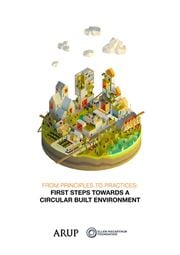From 14th June to 1st July, the second edition of Berlin’s MakeCity – Europe’s largest architecture and urban alternatives festival – offered a diverse and inspiring program introducing new perspectives on urban alternatives and showcasing a host of innovative projects. As part of the festival, the international planning and consulting firm Arup together with the network dieNachwachsendeStadt organised a symposium exploring the concept of the circular economy in cities, “Cities in Transition: The Future is Circular”
The symposium brought together the public and private sectors, with a line-up of industry thought-leaders including academics, researchers, practitioners and students to discuss how cities can future-proof by building adopting circular economy principles.
More than 140 people joined the panel discussions at the CRCLR House in Berlin-Neukölln, moderated by Dr. Gereon Uerz, Head of Foresight Europe at Arup. The symposium explored two key themes: the circularity of materials and buildings and the related possibilities for innovation and design, as well as the importance of cities and society, which play a key role in the successful implementation of circular principles.

